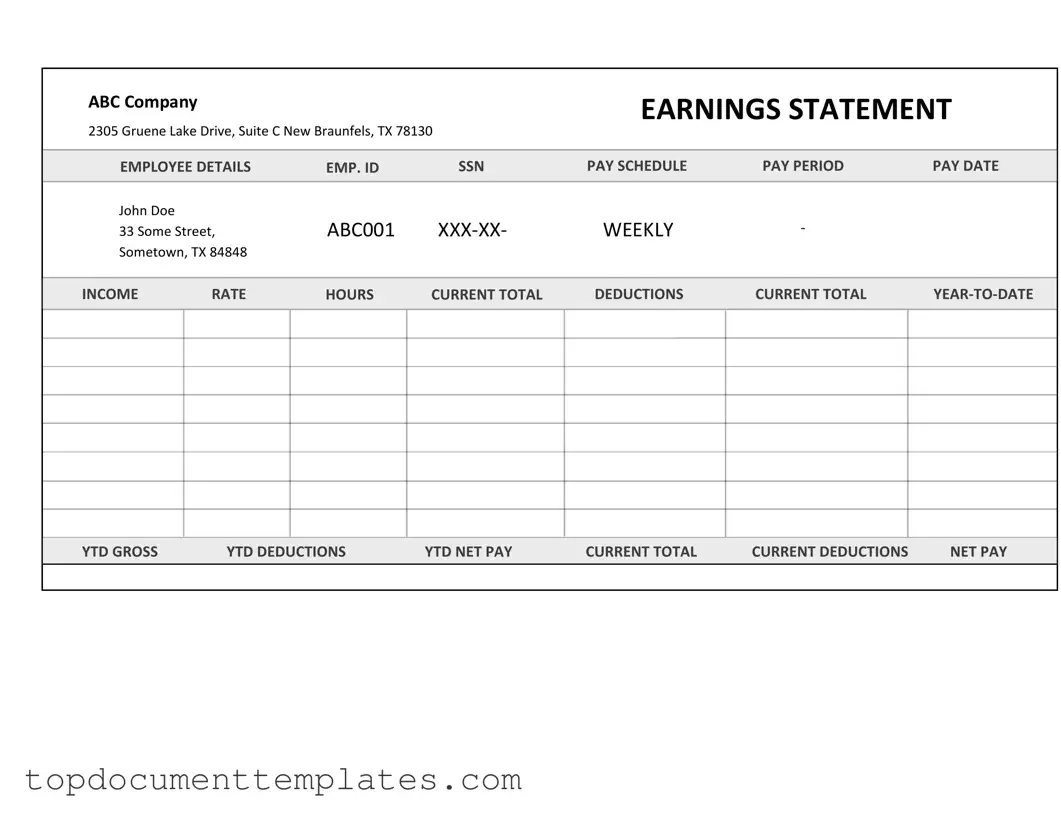Blank Independent Contractor Pay Stub PDF Form
The Independent Contractor Pay Stub form is a document that provides a detailed record of payments made to independent contractors for their services. This form serves as a transparent accounting tool, helping both contractors and businesses track earnings and deductions accurately. Understanding how to fill out this form correctly is essential for maintaining compliance and ensuring proper payment documentation.
To get started, fill out the form by clicking the button below.
Open This Form
